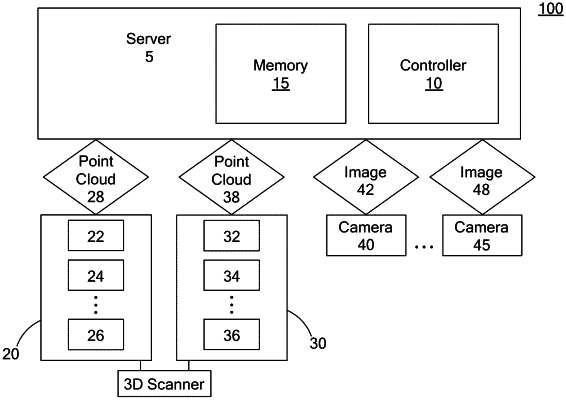| CPC G06T 7/0008 (2013.01) [G06F 30/15 (2020.01); G06F 30/23 (2020.01); G06N 3/08 (2013.01); G06T 7/001 (2013.01); G06T 17/20 (2013.01); G06F 2119/18 (2020.01); G06T 2207/20081 (2013.01); G06T 2207/20084 (2013.01); G06T 2207/30164 (2013.01)] | 16 Claims |

|
1. An inspection system for automotive components comprising:
one or more multi-dimensional cameras configured to collect images corresponding to a selected automotive component;
a network of three-dimensional (3D) scanners configured to scan the selected automotive component;
a conveyor structure operable to transport the selected automotive component; and
a controller communicably coupled to the cameras and the network of 3D scanners to receive the images from the cameras and receive a data set that collectively represent the structure of the selected automotive component from the network of 3D scanners, wherein each data of the data set corresponds to a point image of the selected automotive component,
wherein the network of 3D scanners comprises a first group of scanners having a first angle and a first orientation relative to the conveyor structure and a second group of scanners having a second angle and a second orientation relative to the conveyor structure and different from the first angle and the first orientation, and within each group;
wherein the multi-dimensional cameras are arranged relative to the network of 3D scanners, the conveyor structure, and the selected automotive component;
wherein the controller is configured to:
reconstruct a 3D model of the selected automotive component based on the image data from the cameras and the data set from the network of 3D scanners;
determine whether an anomaly is present with respect to the selected automotive component based on an artificial intelligence based recognition; and
generate, at a production speed, an output indicative of the selected automotive component with or without anomaly.
|